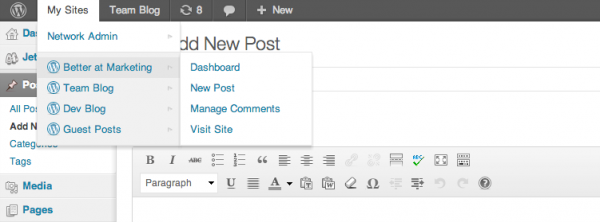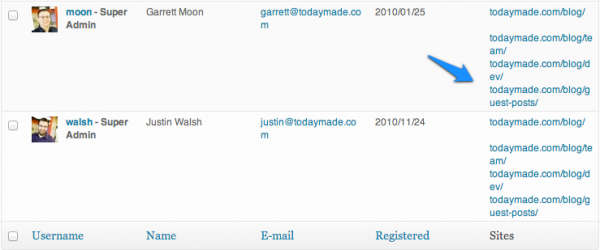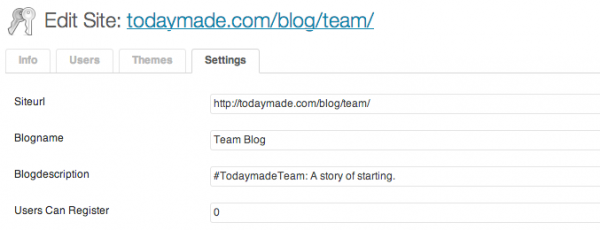A few weeks ago, we converted our blog to WordPress Multisite. While it might not be something everyone will feel comfortable doing, the feature serves as a excellent example of why WordPress is such a powerful blogging platform.
Multisite is a WordPress configuration that allows you to manage several sites or blogs from one installation of WordPress. This functionality is built into every installation of WordPress, once it is turned on. You can follow our step by step process here if you’d like to get started.
In case you’re not sure about it, here are some of the major benefits that multisite allows you to take advantage of.
Why We Went Multisite
Our primary motivation for enabling multisite was a need to differentiate some of the topics on our blog, without creating the overhead of multiple WordPress installs. For the last couple of years, my team and I have been using our blog to help our readers get a grasp on online marketing.
The blog has taken on a life of its own, which made team news and development practices consistently feel more and more out of place. We wanted to be sharing more about what we were doing, but felt confined by our own blog.
What were we to do? We needed two more blogs, but we didn’t want the overhead of managing three different installs of WordPress. The solution? Multisite.
1. Quick Access To Many Blogs
Quick access to several blogs is convenient. Literally, with one username and password, authors and site admins can access all of their sites with a single drop down menu in the WordPress admin bar.

2. Shared Plugins
Another major benefit of multisite is access to shared plugins. Once enabled, multisite allows you to distribute plugins to all of your blogs at once, or choose to individually install them as needed.
Even better, when you update a plugin from the Network Admin Dashbaord, the new plugin is distributed to all of your sites. This is a huge timesaver.

Network-activated plugins are automatically applied to all sites in your multisite network.
3. Shared Themes
Shared themes are another major benefit of going multisite. Like plugins, themes can be automatically distributed to all of your sites by making them Network Enabled.
Each blog or site will be able to run its own theme, so you can easily create several very different sites with ease.

We were able to accomplish a unique look for each blog by using a common parent theme with two customized child themes. If you wanted, you could easily run three totally different themes, or a unified theme across all of your sites.
4. Shared Users
One of the frustrations that comes with creating multiple WordPress installs is creating duplicate users across each site.
Multisite makes this easy by managing a centralized set of users with permission to each site that they need access to.

Users can be given access to one site, just a few, or all of them with ease. Permission levels can also vary.
5. Advanced Settings
With multisite, you gain access to a number of advanced settings and configurations that let you make quick adjustments to each of your blogs.
This panel, which is unique to multisite, lets you see everything from one place. While a bit complex, it is a powerful way to manage your sites.

6. Upgrade Once
And of course, one of the major benefits of running a single WordPress install across all of your blogs is that you only need to upgrade WordPress once.
When you make the move to 3.6, all of you blogs with make the trip at the same time. There are certainly a few drawbacks to multisite, but in the right context, the benefits are definitely real.
Our team is happy with the new arrangement, and are glad we made the switch. This feature is a good reminder of the power of WordPress.

6 Comments